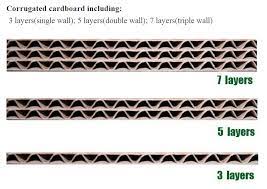 Understanding the Difference: 3-Ply vs 5-Ply Corrugated Boards
Understanding the Difference: 3-Ply vs 5-Ply Corrugated Boards
Corrugated boards, from which boxes are manufactured, are essential packaging materials preferred for their strength and adaptability. A key variable influencing these attributes encompasses the number of paper layers, or ‘ply’, within these boards.
3-Ply Corrugated Boards Explained
A 3-ply corrugated board comprises of three paper layers: two ‘liners’ providing exterior strength, sandwiching a central ‘fluting medium’. This structure renders the board suitable for more lightweight packaging requirements, with common applications within the realms of e-commerce, retail, and in particular, the food industry, where hefty protection isn’t typically demanded.
Unraveling the 5-Ply Corrugated Board
Progressing to a 5-ply corrugated board, the build includes two additional layers—a liner and a fluting medium—providing a robust structure perfect for heavier packaging necessities. The extra plies endow superior strength and durability, making these boards ideal for shipping fragile items or larger consignments requiring enhanced protective measures during transit – think industrial packaging, substantial appliances, furniture and sizable electronic commodities.
3-Ply vs 5-Ply: Delineating Strengths and Applications
The critical distinction between 3-ply and 5-ply corrugated boards is their comprehensive strengths and the associated variety in application scopes. 3-ply board’s moderate strength makes it suitable for more lightweight items, meanwhile the 5-ply board, due to its heightened resiliency, presents itself as the superior choice for more robust or fragile goods.
Final Words
In essence, both 3-ply and 5-ply corrugated boards play distinct roles within diverse sectors of the packaging industry. Recognizing their unique capacities enables businesses to make knowledgeable choices regarding packaging material, guaranteeing a balance between product safeguarding and cost proficiency.
